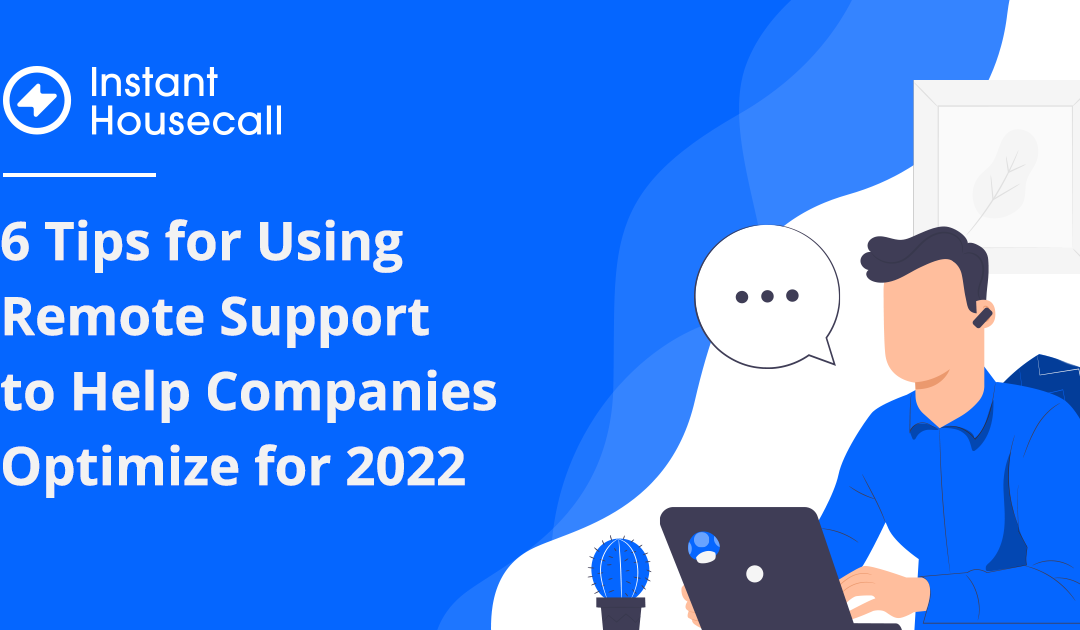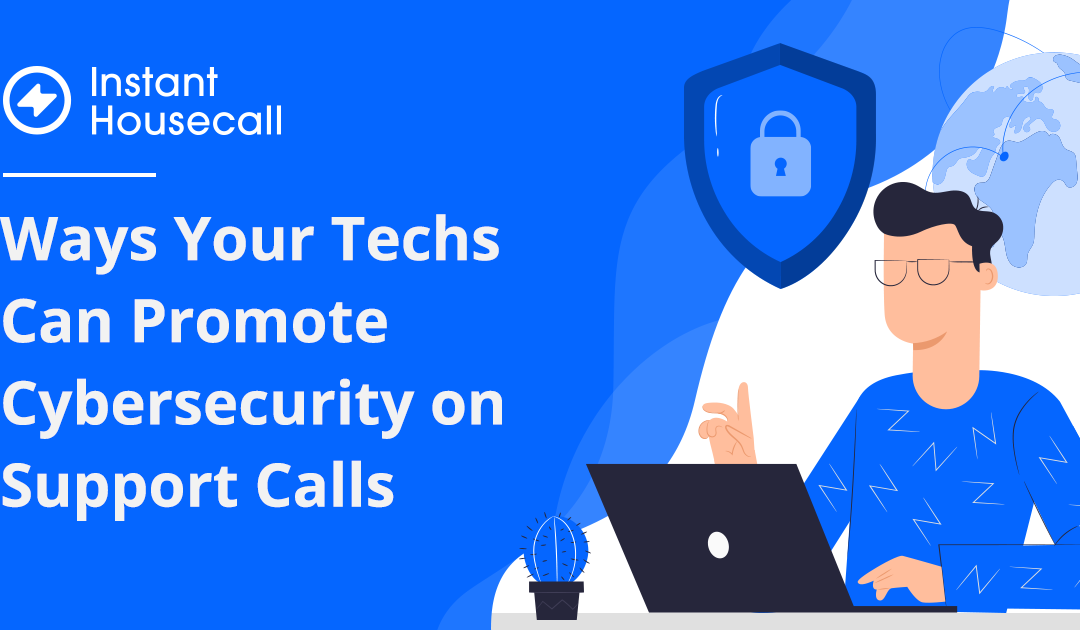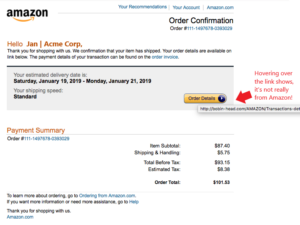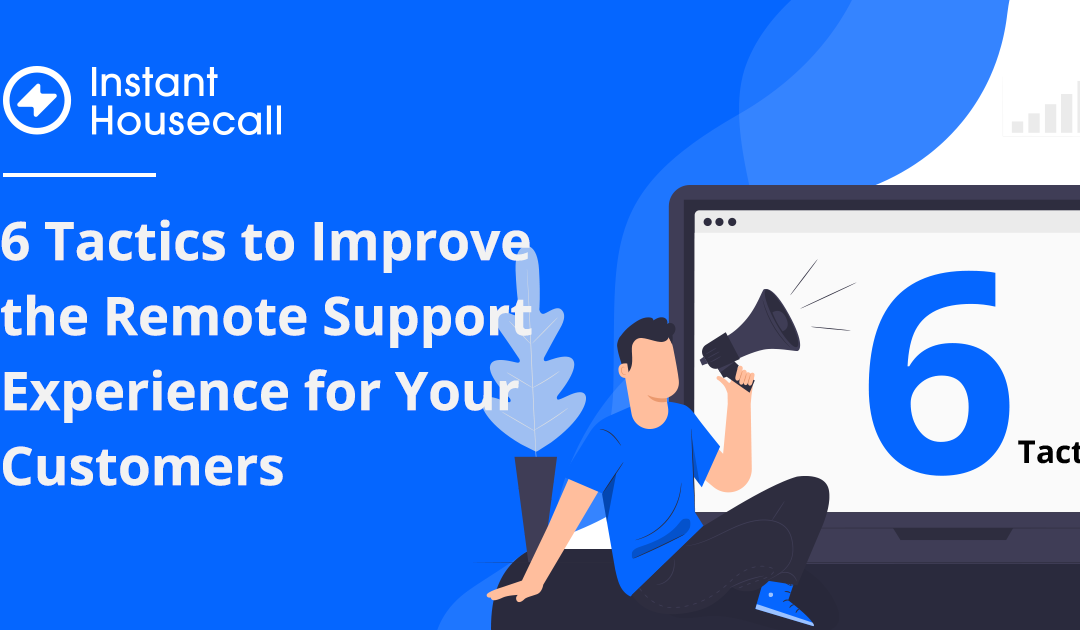I was interviewed by WebSite Planet
I was interviewed by WebSite Planet. Check out the interview here: https://www.websiteplanet.com/blog/instant-housecall-interview/
I was interviewed by WebSite Planet. Check out the interview here: https://www.websiteplanet.com/blog/instant-housecall-interview/

Providing remote support services puts a business in a position of having access to multiple other computers on a regular basis. This also comes with more responsibility to ensure those logins are completely secured and that only authorized personnel can access a client system.
MSPs, IT providers, and others that provide remote support to customers can often be the target of hackers looking to launch a one-to-many attack. Meaning, to breach one account and get access to many other systems through that account.
The most interesting accounts for hackers are those that have privileged access. These are generally your “account owner” or “admin” accounts and they can often do things like add and remove users, update security settings, and access payment details.
Approximately 80% of data breaches are connected in some fashion to privileged account compromise.
It’s important for all businesses, and especially those with access to customer systems to properly manage and audit your privileged account access regularly.
Privileged account management is the strategy of keeping track of the access level of all your user accounts and ensuring they match the needs of the user.
Too many small business owners give all their employees an administrative account in a cloud tool, simply as a “just in case” measure. But the more privileged accounts you have, the more at risk you are of an account breach.
Credential compromise has become the main cause of global data breaches, according to IBM Security’s latest Cost of a Data Breach report. Stealing user credentials is also the main attack type deployed in phishing emails.
If you don’t stay vigilant about limiting your number of privileged accounts and knowing exactly how many you have, you can be at risk for:
The main goals of an audit of your privileged access accounts are as follows.
First, you want to have visibility into how many privileged accounts you have in all your cloud tools, and especially those tools that have access to client systems (i.e., your remote support software).
It’s not unusual for a company that hasn’t been doing privileged account audits to be unaware of just how many user accounts might be out there with unnecessarily high access levels.
Go through your user settings in all cloud tools to compile your list of privileged accounts that have access beyond the basic user level.
Unused accounts that never get closed or removed pose a big risk because no one is keeping an eye on them most of the time. Good cloud security practices include closing unused accounts when a person no longer needs that access, either because they left the company or moved to a different position.
Ensure that any unneeded user accounts are properly closed out and removed so a hacker can’t exploit them to access your systems.
One of the main purposes of a privileged account audit is to look for any accounts that have a higher level of access privileges than needed. You should be using the Rule of Least Privilege, which states that a user should only be granted account permissions needed to do their daily tasks and no permissions that they don’t need.
When reviewing your user accounts for access levels, look at the permissions on the account that is a step lower than a user has and the difference between that and the higher-level account. Ask them how often they’ve used any of those additional permissions. If it’s been several months, then you should consider lowering their access level.
When doing an audit of privileged accounts, it’s also good to review your account setup policy for new users. Who decides on the access level for users? What are the criteria being used to decide?
Without any policy in place, users often just “wing it,” and as a result, you can end up with a much higher risk because of your number of privileged accounts.
To keep your number of administrative accounts from getting out of hand in the future, it’s important to have a comprehensive policy on how user accounts will be set up and what will be the parameters for granting someone a privileged account.
Instant Housecall remote support software has account protection safeguards built-in, such as multi-factor authentication, encryption, and more.
Try Instant Housecall risk-free for 15 days and experience it for yourself! Try it out now.

When we enter a new year, there is an air of starting fresh and resolving to do things better. People tend to make new year’s resolutions, and companies will have their own version that has to do with optimizing and growing their business.
This is the perfect time to tailor your remote support services to fill that need to renew and start the year off right. There is a lot that an IT provider can do to help companies and work-from-home employees start 2022 off on the right foot.
Promote services that optimize, organize, and streamline digital tools and workflows as part of a “new year, new opportunities” drive for efficiency. Here are several ideas to get you started.
Having a faster computer is a universal wish for users. Employees get frustrated with slow systems and employers are always looking to improve productivity.
Offer a speed tune-up session to improve the performance of employee devices and identify any potential upgrades that would make a significant positive impact (such as a memory upgrade). You can promote this as getting a team ready to hit the ground running in 2022 and ensuring slow devices aren’t holding them back.
Security is a continuous concern for businesses. Cyberthreats are always evolving. Without constant vigilance, users can slip into bad security habits, such as creating weak passwords or not installing updates in a timely fashion.
Offer to help companies have a more secure 2022 by doing a security checkup for devices. PCs of work-from-home employees can be particularly at risk if they don’t have any monitoring or management in place.
Many companies don’t have proper visibility into the security of the PCs remote employees are using for work, which is why a larger number of cyberattacks (67%) now target remote employees.
Doing a New Year PC Security Checkup via remote support also sets you up to assist companies with any areas of risk that you find.
Windows 11 just came out in October, and a lot of companies have yet to upgrade. Many were waiting to ensure the new operating system didn’t have any major bugs, and now that it has been out for a few months without any major issues, they’re thinking about upgrading.
Help businesses start the year off right by upgrading to Windows 11 and offering to train users on the new productivity-boosting features like the native Teams integration and snap layouts for multi-tasking.
Credential theft has now become the main cause of data breaches. This is due to more business data being in the cloud, making access to those cloud accounts a main target for cybercriminals.
At the same time, it seems like the number of passwords users must manage continues to go up, causing employees to adopt weak passwords that are easy to breach.
Offer to help a company and its users get set up with a password management application via a remote session. It’s often not having the time or knowing how to get started with a transition that keeps companies from adopting a password manager.
You can offer to do the whole setup for them and their users to help them protect themselves in the coming year from one of the biggest current threats to company security.
Cloud accounts are used widely and can easily get out of hand. Companies and users begin using multiple SaaS apps, and suddenly costs are ballooning and redundancies are popping up.
Cloud waste nearly doubled in 2019 compared to the previous year, and orphaned app subscriptions were up 100% for all company sizes.
Another new year optimization service you can offer by remote support is to help companies streamline their use of cloud services and reduce their waste and costs.
A cloud use review can improve a company’s ability to integrate and automate processes in different apps and improve user productivity.
Email is one of the applications that users are in the most throughout the day. When email isn’t well organized and users don’t know how to use organizational tips like rules and flags, a lot of time can be wasted going through email that doesn’t need to be.
Offer an email cleanup and workflow optimization via remote support to guide users in an email setup that works for them and puts the most important emails front and center. Using rules, you can also show users how to reduce the need to manually move messages into folders, and instead, have it done automatically.
With Instant Housecall remote support software, you can easily connect with customers for many different types of remote support sessions to grow your business.
Try Instant Housecall risk-free for 15 days and experience it for yourself! Try it out now.

No matter how much IT professionals talk about the importance of IT security, there are still a lot of users not following simple best practices. This results in devastating breaches for companies and instances of identity or credit card theft for the victims.
Cybersecurity is an ongoing conversation and as an IT business or other type of technology support provider, you’re in a perfect position to help keep that awareness going during your remote support sessions.
A study by Stanford University found that human error accounts for 88% of all data breaches. Helping reduce the risk of an employee causing an accidental breach for a client can illustrate just how valuable your company is as a service partner.
While the reason for a remote support session may or may not be security-related, there are some ways you can bring in a few awareness tips while you’re on the call.
Relay a Customer Story
People often remember things that they hear in a story. They relate to one of the characters or the situation and it helps a point stick with them.
Without naming names, of course, relate a pertinent story about a customer where a lack of a basic IT security measure caused them major problems. Then relay the IT solution that fixed the issue. Such as your company implementing mobile device security after a malicious app download caused a network breach.
Mention a Recent Cybersecurity Headline
There have been a couple of high-profile ransomware attacks in the news this year, and a client may likely have heard of them, but not really know what it was all about.
Putting a major breach into a context that the person can relate to helps drive home the point of IT security diligence.
For example, you could mention the Colonial Pipeline ransomware attack that caused major gas shortages across the East Coast. Most people will have read about it, but not many will know that it was initiated from an unused VPN account that wasn’t closed out when no longer needed and wasn’t protected with multi-factor authentication.
Explain Why Your Remote Support App Takes Precautions
When you’re on a remote support session, mentioning that your remote connection software has top-level encryption and disconnects automatically when the session is over helps ease security fears.
If you take that a step farther and explain why encryption is important it might connect the dots for the person as to why sensitive data being transmitted over the internet should be secured.
Use a Recent Cybersecurity Statistic
Statistics help put things into perspective for people that might think nothing much is different about malware today as it was five years ago. Mentioning that in the past year, ransomware attacks have grown 485% may get them to realize they need to take additional precautions to prevent an attack.
When on a support call with a small business client that might be a little too lax with their cybersecurity, try a relatable statistic. You could mention that 60% of small companies go out of business within 6 months of a cyberattack, which may be a wake-up call for them.
Show a Convincing Phishing Email & How To Tell It’s a Fake
If your remote support session has anything to do with email security, showing them in real-time what a phishing email looks like and how to spot one can give the person important phishing identification training.
For example, in the phishing email below, there are two giveaways to this being a phishing email:
 Leave Them a Link to a Cybersecurity Tip Sheet
Leave Them a Link to a Cybersecurity Tip Sheet
Service partners that cement their value to their customers go above and beyond what their competitors will do. You can spread best practices and help promote a culture of cybersecurity for your clients by sending a link to an IT security tip sheet with best practices at the end of your remote support session.
You can pull several great tips from the Cybersecurity Awareness Month resource site here. Then use those on a sheet with your branding and be sure to include a link to your website and phone number to call for help with any IT security needs.
Provide Your Techs with a Cybersecurity Checklist
When promoting cybersecurity awareness, you want to ensure that your own technicians are following best practices themselves. Make it easier for them by providing a remote support call security checklist.
It should include your policy on how connections are initiated, how they’re terminated, and any other security protocols your team is to follow when providing report support.
Use a Remote Support Software That Promotes Security Best Practices
Instant Housecall remote support software has multiple layers of security built in to ensure all your sessions are completely secure.
Try Instant Housecall risk-free for 15 days and experience it for yourself! Try it out now.

Just one thing that causes a poor customer experience during a remote support session can cause you to lose that person forever. 48% of consumers have said they’ve stopped doing business with a company after one bad experience.
It’s hard to grow a small business if you’re losing customers as fast as you gain them, which is why customer experience has become a major focus for organizations of all sizes.
It’s expected that by 2022, global spending on improving customer experience will reach $640 billion.
Remote support provides multiple advantages as a revenue stream for companies. It doesn’t require travel, so it costs less to provide. It can also be done from any location and enables you to have your own WFH staff.
But to properly build your remote support services, you need to give the customer a great experience that’s going to encourage them to work with you more often. Just one bad experience from a spotty connection or hard-to-download software can stop someone from ever trying your remote tech support again.
Here are several things you can do to ensure your customers are having a great experience when connecting with your techs for remote support sessions.
It can be frustrating for a customer to call your office with a question after their remote support session and the person answering the phone does not have any record of that past remote support.
If you haven’t logged your remote support calls, it’s difficult to keep an accurate record of client sessions, who helped them, what issue was solved, when, etc.
Keep a log of all sessions and detail what was done. This allows you to improve the customer experience in several ways, including:
People like consistency with a process. It makes things easier when they do the same thing for the 2nd, 3rd, and subsequent times. If someone is faced with different experiences every time they connect with one of your support techs, they can get frustrated and also might think your company is disorganized.
Ensure all technicians are providing the same experience to clients. This includes the greeting they receive, the follow-up documentation that is sent, etc. It also means using the same remote support software and connection protocol every time.
Few things are more frustrating than a remote session taking three times longer than anticipated due to a spotty reception.
Make sure that your team is on fast broadband connections when assisting customers to minimize any problems with lagging or dropped connections.
While being able to answer support calls from a tablet while on the road is great, you also want to make sure your connection will support that. Otherwise, it may be better to have a technician at the office handle the call.
One of the things that people get leary about when it comes to remote support is the need to download software. They often wonder whether a person could spy on them later if that software is still on their hard drive.
You can remove that pain point for customers by using remote software like Instant Housecall that can automatically remove the remote connection software after the session is ended. Promote this feature with clients so they feel more secure and have an improved remote session experience.
People are used to an easy online payment process no matter what product or service they’re purchasing. If your payment process isn’t easy or automatic, then they’ll likely go elsewhere for their remote support.
Use a remote support tool that can connect to an online shopping system and enable easy payment for your customers without them having to leave your website.
When you’re going through a tutorial session or a technology fix for a remote client, they’ll often later forget exactly what was done or what you recommended that they do.
You can go above and beyond for your customers by recording the support sessions (with their permission, of course!). Then once the session has ended, send them a link to a video of the session that they can review later.
Instant Housecall remote support software provides you and your customers with an easy, seamless experience that makes for better remote support sessions.
Try Instant Housecall risk-free for 15 days and experience it for yourself! Try it out now.

This year back to school is still going to look like somewhat of a hybrid due to the pandemic. Some students will be going back to in-person learning full time, but others will have parents that opt for virtual learning.
Many college students that had their dreams of the “college experience” put on hold last year, will be looking forward to a more normal higher education environment, and closer to the one they were expecting.
After an enrollment drop of nearly 5% for undergraduates last semester, expectations are that the COVID vaccine rollout will drive an increase in enrollment in the fall and a big back-to-school season.
What does this mean for your average MSP or IT business owner? It means that you have an opportunity to market remote support services tailored to the needs of students.
One of the nice things about offering remote support services is that you’re not only limited to customers in your local service area. You could offer back-to-school remote support to students anywhere.
Here are some creative ways you can capture some student remote support business.
Technology is now a requirement for a successful college student. If something goes wrong with their computer, it can mean they miss an assignment or lose an entire paper they’ve been working on for days.
You can market that remote support provides an important technology lifeline for a college student. They have help when they need it to solve an issue or get a troublesome device back up and running.
By offering a student remote support plan, you could bundle antivirus and patch management services along with technical assistance, giving parents more peace of mind.
Some features that you can highlight of your remote support plan that may appeal to college students are:
Many parents will be making the difficult choice this fall to keep an unvaccinated child at home for virtual school until they are able to get the vaccine.
Technology problems are one of the frustrations that many parents had during the last school year when nearly everyone was doing at-home learning.
You can make life much easier for parents and students through a virtual learning remote support offering. You could offer both on-demand support and monthly plans that include PC optimization and security.
For this target audience, you want to highlight how you’re going to make their lives easier. For example, mention that remote support for at-home learning can:
During the peak of the pandemic, phishing attacks rose 220%. But, that’s not the only example of how hackers have been having a heyday during the pandemic. Ransomware and firmware attacks are also up, along with a 630% increase in attacks on cloud accounts.
You can market your back-to-school remote support with a security focus and note that your services can help keep kids safer when they’re online. Mention the rise in cyberattacks and note that students are often online doing research for their schoolwork, which puts them more at risk of landing on a phishing site.
Put together a Student Cybersecurity Remote Support plan that includes things like:
Don’t forget to promote the security of your remote support platform. For example, you may mention that it uses encryption and incorporates multi-factor authentication to keep out any unauthorized users. By promoting the security features your firm offers, you build trust in your remote support services and confidence that you can keep someone’s child more secure.
As an add-on service, you might also offer a remote training session on how to spot phishing, using real examples so kids can see exactly what to watch out for.
Instant Housecall remote support software has multiple features that make it easy to expand your remote support clients without the need to hire more technicians.
Try Instant Housecall risk-free for 15 days and experience it for yourself! Try it out now.
Recent Comments